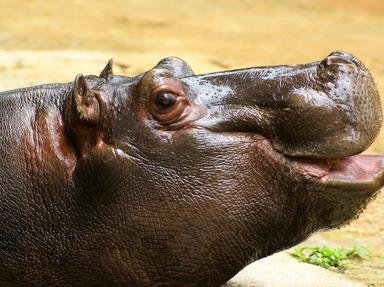Quiz Answer Key and Fun Facts
1. I imagined I was a pirate, and then I turned around to see this nocturnal Madagascan primate with a long middle finger. Which mammal did I encounter?
2. I closed my eyes, imagining a romantic kiss. My daydream was broken once I opened my eyes and saw this grey-brown fin-walking fish with a distinctive feature. Which fish, endemic to the Galapagos Islands region, did I see?
3. Next, I saw a mole. Or was it an earthworm? No, surely a newt. It seemingly resembled all three creatures. Which small, four-legged pink amphisbaenian native to the Baja California region did I encounter?
4. This neotenic salamander looked happy to see me. Its 'smile', branch-like gills and underdeveloped limbs made it seem cute, if a little odd. Which wide-headed amphibian, associated with Lake Xochimilco, did I meet?
5. I whistled to myself, but felt far from a Disney princess when I saw an animal from the Grimpotheutis genus, known for its long ear-like fins projected above its eyes. What is another name for the type of bell-shaped animal that I saw?
6. I really must be dreaming, because I've just seen a beluga whale in a freshwater river. On closer inspection, in spite of having a blunt and rounded head it seems to have a darker colouration and a dorsal fin. Which mammal, native to the Indo-Pacific region, did I see?
7. I momentarily thought this bird might have been a rock star, with his prominent 'hairdo' and flashy pinecone 'scarf', but nope. Which appropriately named South American black bird caught my eye?
8. I'm used to the surreal by now - it seems that even the seaweed can swim by itself in the depths 'Down Under'. Which camouflaging seahorse-like creature from the Syngnathidae family did I spot?
9. The screaming and wailing of this brown nocturnal echolocating frugivore would make it hard for me to fall asleep even if I wanted to. Named for a useful product, which cave-dwelling South American bird did I hear from?
10. Just as I feel as though my grip on reality has slipped, I was pleased to spot a more familiar animal who looked like it was about to have a long, long sleep.
Have a look at the first letter of each answer, and you should find a mammal that could be a pink fairy or screaming hairy species.
Source: Author
malik24
This quiz was reviewed by FunTrivia editor
rossian before going online.
Any errors found in FunTrivia content are routinely corrected through our feedback system.
